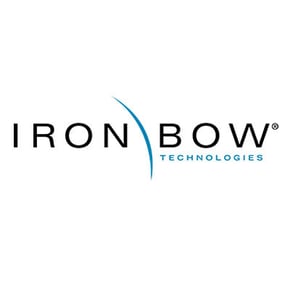Cyber security is becoming the top priority at most government agencies. The Army is no different. With cyberthreats steadily growing more sophisticated, the technology solutions deployed to counteract them are likewise becoming more complex. ITES-3H is set to be a major source of cyber security technology for the Army.
From a security standpoint, the enterprise is a complex environment, says John Meier, Iron Bow’s general manager for DOD East & Intel sales team. “You’ve got the perimeter to defend, which requires all kinds of firewall types of activity,” he says. “Then you’ve got threat intrusion protection, defense against insider threats, digital loss prevention and protection for data that leaves the organization.”
There are all types of software that need to run end-to-end within the IT infrastructure to provide for cyber security, he says. That provides a huge opportunity for companies like Iron Bow to help the Army.
Defensively, the need for security goes deep. The Army’s Warfighter Information Network-Tactical Increment 2 (WIN-T), for example, is an important mobile communication system meant to provide protected voice, video and data services for warfighters in the field. WIN-T deployment started in 2015.
There have been complaints about its effective security since the beginning, however. An outside review by Johns Hopkins University and the Army Research Laboratory called for both hardware and software improvements. The Defense Department’s Operational Test & Evaluation warned WIN-T’s vulnerabilities opened the whole Army infrastructure to threats, since WIN-T is connected to the military’s other mission command systems.
Cyber security isn’t just about defense, however. The Army is also looking to put so-called “cyberwarriors” into the field where they can hack into opposing forces’ systems to steal information and also insert malware “bombs” to try and render those enemy systems ineffective.
The government as a whole is becoming more aware of the need for a cyber security element embedded in their IT procurement. For example, most bids now have some kind of clause or questionnaire asking vendors about the security aspects of the products they’re selling.
Most of the solution-based RFPs to which Iron Bow responds now require the vendor ensure the products offered are on an approved products list, says Meier. This means the company must ensure they can pass whatever tests are required. It’s becoming “more and more a natural part of what we have to do,” he says.
Both vendors and government agencies must understand the security aspects of any solution under consideration. That doesn’t refer only to security products and solutions themselves, but also to the network overall. That includes all network devices, all end-user devices, and all IT that stores and transmits data and that must be defended.
“The good news is that all of those products and solutions are typically bought at the enterprise level today,” says Meier. “ITES-3H is the perfect contract for that.


COMMENTS